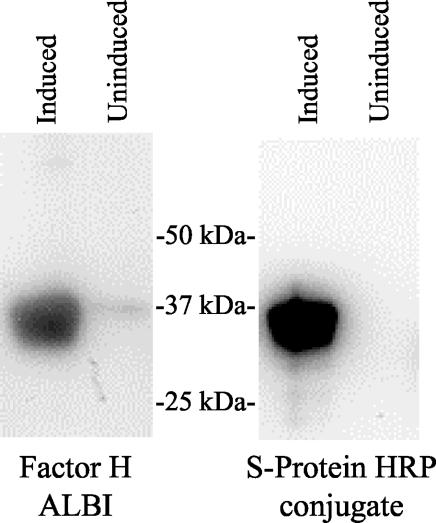FIG. 2.
Demonstration of factor H binding by recombinant FhbA. The gene encoding FhbA was amplified with primers containing tails that allow for LIC cloning and expression as an N-terminal S-tag fusion protein. The PCR fragment was annealed with pretreated pET32-Ek/LIC and propagated in NOVABlue cells, and the plasmid was isolated. The plasmid was transformed into E. coli BL21(DE3) cells, and colonies carrying the appropriate recombinant plasmids were grown in Luria-Bertani broth with ampicillin (50 μg ml−1). The cultures were induced with IPTG (or not induced), fractionated by SDS-PAGE, immunoblotted, and then tested for factor H binding by using the factor H ALBI assay or screened with S-protein-HRP conjugate (to confirm expression). For the factor H ALBI assay, the blots were incubated with purified human factor H, and then bound factor H was detected by using anti-human factor H antiserum and chemiluminescence.

